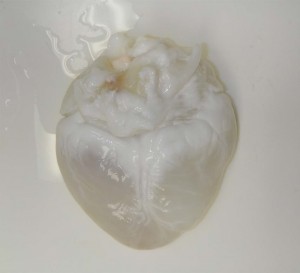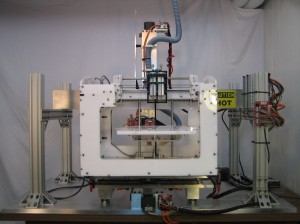
A team of BYU researchers are working on a way to engineer transplantable bio-artificial organs.
The demand for organ transplants has rapidly developed, with more people in need of transplants than there are organs available. BYU associate professor Alonzo Cook and his team of researchers in the chemical engineering department are to make it easier.
Tissue engineering holds the key that may give patients a new sense of hope in receiving a new organ, which could be made using the patients’ own cells.
“Through tissue regeneration, we could potentially create a new organ out of our own cells, our own protein,” Cook said. “We wouldn’t have to rely on immuno-suppression medicine, which makes you more susceptible to flu and colds and other viruses while you recover from a transplant.”
Cook, along with Ph.D student Nima Momtahan, started researching three years ago. Momtahan is working on creating transplantable bio-artificial cardiac organs.
“I believe this subset of tissue engineering could potentially save thousands of lives in the future,” Momtahan said. “At the moment we are focusing on improving our techniques to clean the components that make up the heart of a porcine. We use medical-grade detergent washes, as well as ionic and non-ionic components, to help with the removal of the cells, as our ultimate goal is to only leave the organ’s scaffold.”
The research comes in response to the growing need for organ donors as well as the dangers of transplants.
“We just do not have enough donors to help everybody that needs a heart,” Cook said, explaining that due to factors like cell preservation, transportation and matching the donated organ, numerous complications can occur during organ transplants.
“Sometimes donated organs are unfit for transplantation due to incompatible cellular nature of the donor’s blood,” Cook said.
Hearts are not the only organs these researchers are looking to engineer. Some of the students are working on kidney and eye regeneration.
“They’ve taken eyes out of rats and disassociated out the retina and removed the cells in order to acculturate them,” Cook said. “Perhaps one day we will be able to repair ocular disease by replacing the cells in the photo receptors due to aging deterioration.”

Cook talked about how lack of funding can become a problem when asked about the limitations and challenges of the research.
“Proven science can only be obtained through proper research, and these (experiments) take time. It just loses the interest of the funding agencies,” he said. “In fact, the technology to carry on with the study of tissue regeneration has been around for 20 years; however, it’s been so slow that the federal government is sort of like, ‘We know you are trying hard, but it’s not fast enough.’ The sky’s the limit, and we are always seeking funding.”
Challenges also include ethical questions concerning the use of stem cells in organ regeneration.
“Our society has to keep an open mind about the current research of stem cells,” said BYU student Nafiseh Poornejad. “Understanding that the purpose of this area of study is for the greater good of humanity is key.”
Research at BYU always uses ethical sources for medical supplies and information, the researchers said.
“There is no barrier ethically on the willingness to re-create organs from the scientific community,” Cook said. “The doctors are clamoring for this. Any transplant surgeon will tell you they would love to have 10 more hearts a day to transplant.”
Injuries, amputated limbs and damaged organs could all be formed back into a complete, healthy state if research finds the right scientific treatments. Cook explained that this is not meant to be a one-size-fits-all solution to the various problems a patient can experience.
“We would never propose that this should be a solution, for everybody or for every situation.” Cook said. “As we grow old we are bound to experience multiple organ failure, and eventually it’s time to go. But this is more about the quality of life of afflicted patients.”




